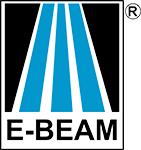What special packaging materials do I need for e-beam sterilization?
One question we get often is, “What special packaging materials do I need for e-beam sterilization?” The short answer: None!
COVID-19: Understanding how medium-voltage electron beam can be an alternative sterilization method
In these unprecedented times, COVID-19 is affecting populations worldwide in several aspects and continuously challenging health care professionals and the medical device industry. The need for specific materials for testing or sanitizing purposes has skyrocketed, while manufacturing and sterilization capacity has not necessarily increased at the same pace.
Gamma vs E-beam vs X-Ray: A Comparison
In the industrial sterilization industry, three primary sterilization methods are e-beam, gamma, and x-ray. Ionizing radiation is the second-largest method of choice when it comes to the industrial sterilization market, accounting for almost 45%. While gamma and e-beam are the traditional favorites, newer to the game is x-ray.
How does E-BEAM ensure my products will be sterilized and ready for consumer use QUICKLY?
With an increasing demand for sterilized products on the market, one question we get often is: how does E-BEAM ensure my products will be sterilized and ready for consumer use quickly? Well, there are a number of factors that go into that.
A time for thanks
This year has tested us all in ways we never imagined. 2020 has, in essence, turned our own personal worlds — and the world — upside down (and then spun them around, flipped them over again, and shaken them a bit, just for good measure).
Crash Course Recap: Lichtenberg Figures
[embedyt] https://www.youtube.com/watch?v=GMGLYkzU67g[/embedyt] Lichtenberg figures are named after German physicist Georg Christoph Lichtenberg, who originally discovered them. They’ve also been called Lichtenberg trees or “trapped lightning.”
E-beam Crosslinking vs Chemical Crosslinking
Crosslinked foams have improved physical properties over non-crosslinked foams and often go into more demanding applications, particularly where tolerances are more important, such as:
Center for Electron Beam Excellence at E-BEAM Services Fuels Customer Innovation in Product Development
Harnessing the Power of Electrons to Differentiate Products in the Market Lebanon, OH – E-BEAM Services Inc., the largest contract electron beam service provider in the United States, is fostering innovation with its Center for Electron Beam Excellence designed to use the power of electrons to enable clients to discover new or improved products. Building […]
What is e-beam technology?
Electron beam processing is a technology with a broad range of commercial applications. It provides users with an effective and efficient means to bring about useful changes in the properties and performance of polymers and other materials. The technology is also widely used for the sterilization of medical devices, pharmaceuticals, and cosmetics.
Crash Course Recap: Does e-beam make my products radioactive?
[embedyt] https://www.youtube.com/watch?v=cDw35w1VLTY[/embedyt] One question we get a lot is: Does e-beam make my products radioactive? The short answer: No! The (slightly) longer answer:
